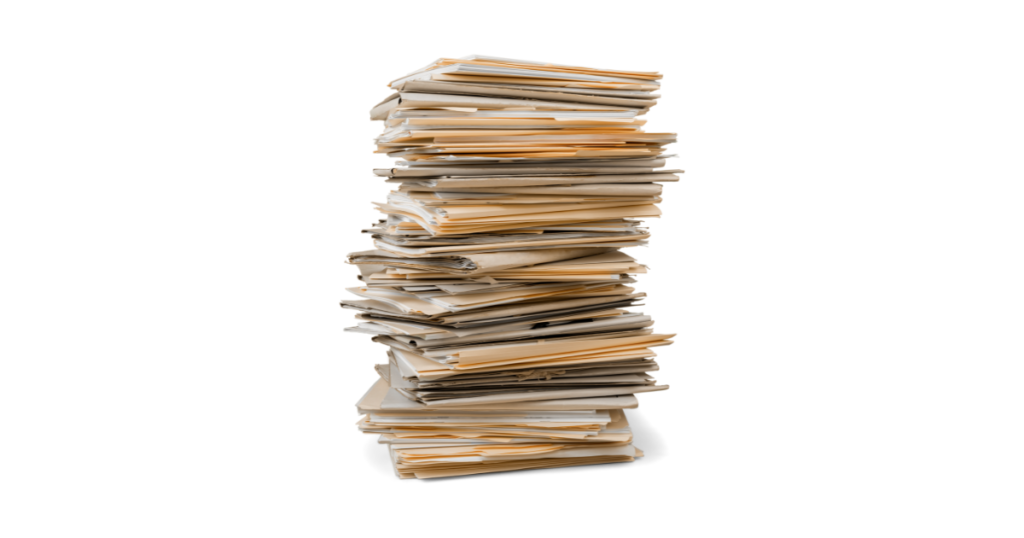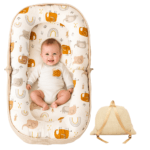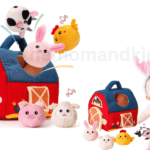Parents often grapple with a never-ending influx of papers in the whirlwind of school activities, assignments, and projects. From crumpled homework assignments to colourful artwork, the sheer volume can quickly become chaotic if not managed efficiently. However, fear not, for amidst this chaos lies the opportunity to master the art of organization.
“Mastering the Chaos: A Parent’s Guide to Organizing Kids’ School Papers” is a beacon of hope for those seeking order amidst the paper storm. This comprehensive guide will explore practical strategies and expert tips to transform your home into a well-oiled organization machine.
Say goodbye to lost permission slips and frantic searches for overdue assignments. With dedication and the right approach, you’ll conquer the paper clutter and instil valuable organizational habits in your children. So, buckle up and prepare to embark on a journey towards a calmer, more organized household.
Importance of organizing kids’ school papers

Organizing kids’ school papers is crucial for instilling responsibility and organizational skills in children. It fosters accountability and teaches them the importance of maintaining order in their academic materials. Additionally, a well-organized system facilitates seamless communication between parents and teachers, ensuring timely responses to important notices and updates. It also alleviates stress and anxiety by streamlining the locating of assignments and documents, creating a more harmonious home environment.
Moreover, organized school papers allow families to track their child’s academic progress and preserve valuable achievements and memories for future reference. In essence, the significance of organizing kids’ school papers transcends mere tidiness; it nurtures vital life skills and enhances familial communication and cohesion.
The Challenges parents face

Parents face several challenges when organizing their kids’ school papers. Firstly, the overwhelming volume of paperwork, including homework assignments, permission slips, and artwork, can quickly become disorganized without a transparent system. Finding a balance between keeping essential documents accessible and decluttering unnecessary papers requires careful planning and consistency. Additionally, involving children in the organization process can be challenging as they may resist parting with old assignments or artwork. Encouraging their participation and teaching organizational skills requires patience and creativity from parents.
Moreover, maintaining the organization over time presents an ongoing challenge. Even with an established system, papers can accumulate quickly, necessitating regular review and purging to prevent clutter. Finding the time and motivation to stay on top of organizational tasks amidst busy schedules can be daunting for parents, often leading to stress and frustration. However, overcoming these challenges through effective communication, involvement of children, and consistent maintenance can lead to more harmonious and organized households.
Benefits of Organizing Kids’ School Papers
Organizing kids’ school papers offers a multitude of benefits for both parents and children:
- Reduced Stress: An organized system for managing school papers alleviates stress for parents and children by providing clarity and structure. Knowing where to find essential documents and assignments reduces the anxiety of last-minute searches.
- Easy Access to Information: Organized school papers ensure that critical information, such as permission slips, school notices, and homework assignments, is readily accessible when needed. This facilitates smoother communication between parents and teachers and prompts responses to school-related matters.
- Teaching Organization Skills: By involving children in the organization process, parents can instil valuable organizational skills that will benefit them throughout their lives. Recognizing, filing, and maintaining documents teaches children responsibility and accountability.
- Enhanced Time Management: An organized system helps children manage their time more effectively by providing a clear overview of their assignments and deadlines. This fosters independence and self-regulation, empowering children to prioritize tasks and manage their workload efficiently.
- Preservation of Memories: Organizing school papers allows parents to preserve cherished memories, such as artwork, projects, and report cards, for years to come. Parents can celebrate their child’s achievements and milestones by creating a designated space for these items while maintaining a clutter-free environment.
Top 8 tips for overcoming Common Challenges
Here are the top 8 tips for overcoming common challenges in organizing kids’ school papers:
- Establish a Clear System: Create a well-defined system for organizing papers, including designated storage areas and categories for different types of documents.
- Consistent Maintenance: Schedule regular maintenance sessions to review and tidy up the organization system, preventing clutter from accumulating.
- Involve Your Child: Encourage your child to participate in the organization process by assigning tasks and making them fun.
- Set Realistic Goals: Break down organizational tasks into smaller, manageable goals to prevent being overwhelmed and maintain motivation.
- Use Technology: Utilize digital tools such as scanners and cloud storage to digitize essential documents and reduce paper clutter.
- Maximize Space: Optimize storage space by utilizing vertical solutions, wall-mounted shelves, and slim storage options for small spaces.
- Be Flexible: Be open to adjusting your organization system as needed to accommodate changes in your child’s needs and preferences.
- Celebrate Progress: Acknowledge and celebrate achievements in the organization, no matter how small, to reinforce positive habits and motivation.
How do you set up a System to organize kids’ school papers and files?
Setting up a system to organize kids’ school papers and files is essential for maintaining order and reducing stress for parents and children. Here are some steps to effectively establish a system:
- Designate a Specific Area: Choose a dedicated space in your home, such as a corner of the kitchen or a home office, for organizing school papers and files. Having a designated area helps create a sense of order and consistency.
- Choose the Right Storage Solutions: Invest in storage solutions like filing cabinets, bins, or shelves to keep papers organized. Consider using clear plastic containers or magazine holders for easy access and visibility.
- Establish a Routine: Set aside time each day or week to sort papers and files, file them accordingly, and declutter as needed. Consistency is critical to maintaining an organized system.
- Categorize Papers: Create separate folders or bins for documents, such as homework assignments, permission slips, and artwork. Label each category clearly to facilitate easy retrieval.
- Utilize Digital Tools: Consider scanning important documents and storing them digitally on computers or cloud storage platforms. This reduces paper clutter and ensures that important documents are accessible from anywhere.
How to Sorting and Decluttering?
Sorting and decluttering kids’ school papers is crucial in maintaining an organized system. Here’s how to effectively tackle this task:
- Categorize Papers: Start by sorting papers into categories such as homework assignments, permission slips, artwork, and notices. This will help you identify what needs to be organized and make the decluttering process more manageable.
- Decide What to Keep, Toss, or Digitize: Go through each category and decide which papers to keep, toss, or digitize. Keep important documents like report cards, certificates, and essential notices. Toss or recycle papers that are no longer needed or relevant. Consider digitizing papers to reduce physical clutter while still preserving important information.
- Manage Artwork and Projects: Artwork and projects can accumulate quickly and take up a lot of space. Consider displaying artwork temporarily before storing or digitizing it. Keep only the most meaningful or sentimental pieces, and consider photographing the rest before letting them go.
- Establish a System for Managing Papers: Once you’ve sorted the papers, establish a system for managing them in the future. Create folders or bins for different categories and label them clearly for easy identification. Set a regular schedule for sorting through papers to prevent clutter from building up again.
How to do you arrange a kid’s bookshelf?
Arranging a kids’ bookshelf promotes organization and encourages a love for reading and learning. Here’s how to arrange a kids’ bookshelf effectively:
- Sort Books by Category: Begin by categorizing books into picture books, chapter books, non-fiction, and fiction. This will help kids find the type of book they’re interested in reading.
- Display Books Facing Outwards: For younger children, displaying books facing outwards can make them more visually appealing and enticing. This allows them to easily see the covers and select books based on their interests.
- Consider Height and Accessibility: Place frequently read or favourite books within easy reach of your child. This empowers them to independently select books and fosters a sense of autonomy.
- Use Bookends or Baskets: Bookends or baskets can help keep books upright and organized. Consider using themed bookends or colourful baskets to add a playful touch to the bookshelf.
- Rotate Books Regularly: To keep your child engaged and excited about reading, regularly rotate books on the bookshelf. Swap out books every few weeks or months to introduce new stories and topics.
- Create a Cozy Reading Nook: Consider creating a cosy reading nook beside the bookshelf if space allows. Add a comfy chair or bean bag, soft pillows, and a reading light to encourage your child to curl up with a book.
- Include Other Reading Materials: Besides books, consider including other reading materials such as magazines, comic books, or activity books on the bookshelf to cater to different interests.
How do you organize kids’ shelves?

Organizing kids’ shelves involves creating a system that promotes accessibility, encourages tidiness, and reflects their interests. Here’s a step-by-step guide:
- Declutter: Start by decluttering the shelves. Remove any broken or unused items, toys, or books your child has outgrown or no longer enjoys.
- Sort by Category: Categorize the remaining items into books, toys, games, puzzles, art supplies, and educational materials. This will help you visualize how to organize the shelves effectively.
- Prioritize Accessibility: Place frequently used items within easy reach of your child. Books, toys, or games they love should be at eye level or on lower shelves to be accessed independently.
- Use Storage Solutions: Use storage solutions like bins, baskets, or colourful containers to corral smaller items like Legos, dolls, or art supplies. Label these containers to help your child identify where items belong and encourage them to clean up after themselves.
- Create Zones: Designate specific zones on the shelves for different categories of items. For example, reserve one section for books, another for toys, and another for art supplies. This helps maintain order and prevents items from getting mixed up.
- Add Decorative Touches: Incorporate decorative elements like wall decals, themed bookends, or personalized nameplates to add visual interest to the shelves and make them feel personalized to your child’s taste.
- Rotate Toys and Books: To keep things fresh and exciting, rotate toys and books regularly. Store some items out of sight and periodically swap them with ones on the shelves to maintain your child’s interest and prevent boredom.
- Involve Your Child: Encourage your child to participate in the organization process. Let them choose where certain items should go and involve them in decorating the shelves with their favourite toys or artwork.
- Regular Maintenance: Establish a routine for tidying up the shelves. Set aside time each day or week to straighten items, put away toys, and ensure everything is in its designated place.
Creating Folders and Labels

Creating folders and labels is essential in organizing kids’ shelves, whether for books, toys, or other items. Here’s how to do it effectively:
- Choose Appropriate Folders: Select sturdy and durable folders, preferably plastic or cardboard. Choose folders in different colours or designs to add visual interest and make the organization fun for kids.
- Label Clearly: Indicate the contents of each folder using clear and legible labels. You can use a label maker or adhesive labels or write directly in the folder with a marker. Ensure the labels are large enough for your child to read them easily.
- Assign Specific Purposes: Allocate folders for specific purposes or categories of items. For example, have separate folders for different subjects or types of books, such as fiction, non-fiction, and picture books. Similarly, designate folders for specific toys or games to keep everything organized.
- Color-Coding: Consider using a color-coding system to further organize the folders. Assign a different colour to each category or type of item, and match the folder’s colour with the label. This makes it easier for kids to quickly identify where items belong.
- Involve Your Child: Encourage your child to create and label the folders. Let them choose the colours and designs for the folders and decide how to categorize the items. This gives them a sense of ownership and helps reinforce the organization’s system.
- Make Labels Visual: For younger children who may not be able to read yet, include visual cues on the labels in addition to text. Use pictures or icons to represent different categories of items, making it easier for them to recognize where things belong.
- Regularly Update and Maintain: As your child’s interests and preferences change, be prepared to update the folders and labels accordingly. Review the organization system regularly together and make adjustments as needed to ensure it remains effective and functional.
Utilizing Technology
Utilizing technology can significantly enhance the organization of kids’ school papers and files. One effective way is to invest in a scanner to digitize important documents, such as permission slips, report cards, and artwork. Storing these digital files securely on computers or cloud storage platforms ensures easy access from anywhere, eliminating the need for physical storage space and reducing paper clutter.
Organizing digital files into folders mirroring the physical filing system allows for efficient retrieval and management. Additionally, technology can be used to set up reminders and alerts for important deadlines or events, helping parents stay organized and on top of their children’s school-related tasks. By harnessing the power of technology, parents can streamline the organization process and create a more efficient system for managing kids’ school papers.
How are you Involving Your Child?

Involving your child in the organization process fosters a sense of responsibility and ownership. Here are some practical ways to involve your child:
- Assign Tasks: Give your child specific tasks to help with organizing, such as sorting through papers, labelling folders, or arranging items on shelves. This empowers them to contribute to the process and teaches them valuable organizational skills.
- Make it a Game: Turn organizing into a fun game or challenge by setting goals and offering rewards for completing tasks. For example, see who can tidy up their toys or make a game by matching items to their corresponding folders.
- Offer Choices: Allow your child to choose how to organize their belongings. Let them choose the colours or designs for folders or decide where certain items should go on the shelves. This gives them a sense of control and investment in the process.
- Lead by Example: Be a role model for the organization by demonstrating tidy habits and involving your child in your organization’s tasks. Show them how to sort papers, file documents, and keep their belongings neat and orderly.
- Praise and Encourage: Provide positive reinforcement and praise for your child’s organizing, organizingelebrate small victories and accomplishments to encourage them to continue participating.
Managing Incoming Papers
Managing incoming papers effectively is crucial for maintaining an organization at home. Here are some tips to help you stay on top of the influx of paperwork:
- Designate a Paper Drop Zone: Set up a designated area in your home where all incoming papers are placed, such as a countertop or entryway table. This prevents documents from being scattered throughout the house and makes it easier to keep track of them.
- Establish a Routine: Set aside time each day or week to review the incoming papers and deal with them accordingly. This could involve sorting them into different categories, such as bills, school notices, or personal correspondence, and taking action as needed.
- Handle Papers Promptly: Deal with papers immediately to prevent them from piling up. Pay bills on time, RSVP to invitations, and sign and return school forms promptly to avoid unnecessary clutter and potential missed deadlines.
- Use Folders or Binders: Store essential papers or organize them using folders or binders. Label each folder or binder with the appropriate category, such as “bills,” “school notices,” or “medical documents,” to make retrieval easier.
- Go Digital: Consider digitizing important papers to reduce clutter and make them easier to access and manage. Scan documents and store them securely on your computer or in the cloud, backing up important files regularly.
- Dispose of Unnecessary Papers: Regularly go through the paper pile and discard any papers that are no longer needed or relevant. Shred sensitive documents to protect your privacy and recycle or toss the rest to free up space.
Regular maintenance
Regular maintenance is essential for sustaining an organization at home, especially when managing kids’ belongings. Here’s how to incorporate regular maintenance into your routine:
- Schedule Regular Check-Ins: Set aside time weekly or monthly to review and tidy up the organisation. This could involve straightening shelves, decluttering bins, and reoreorganizingems as needed.
- Purge Unnecessary Items: Regularly go through toys, books, and other belongings to identify no longer used or needed items. Donate or discard these items to prevent clutter from building up over time.
- Update Organization Systems: As your child’s interests and needs evolve, update the organization systems accordingly. Consider adjusting shelf heights, adding or removing bins, or reorganizing categories to better suit your child’s current preferences.
- Encourage Responsibility: Involve your child in the maintenance process by assigning them age-appropriate tasks. Teach them to tidy up their belongings, put away toys after playing, and return items to their designated spots.
- Lead by Example: Be a role model for the organization by demonstrating tidy habits and consistency in maintaining its systems. Show your child the importance of caring for their belongings and keeping the home environment clutter-free.
- Celebrate Successes: Acknowledge and celebrate your child’s efforts in maintaining or organising. Raise them for their contributions and accomplishments, whether tidying up their room or helping with household chores.
Dealing with Special Papers
- Dealing with unique papers, such as sentimental keepsakes or essential documents, requires careful consideration and orgorganizationere are some tips for effectively managing unique papers:
- Designate a Special Papers Folder or Box: Create a designated folder or box for storing unique papers. This could include birth certificates, passports, diplomas, and family heirlooms. Keep this folder or box in a secure and easily accessible location.
- Use Acid-Free Archival Materials: When storing unique papers, use acid-free archival-quality materials to prevent deterioration and preserve the integrity of the documents. This is especially important for delicate or valuable items you want to pass down through generations.
- OrgOrganize Category: Sort unique papers into categories based on their type or significance. For example, you could have separate sections for personal documents, family photos, children’s artwork, and sentimental letters or cards.
- Label Clearly: Label folders or containers containing unique papers clearly and accurately to quickly identify the contents at a glance.
- 5.Create a Memory Box: Consider creating a memory box or scrapbook to store special papers along with other mementos and keepsakes. This allows you to create a curated collection of memories to be cherished and shared with future generations.
- Display Special Papers: Showcase unique papers with sentimental value by framing them or displaying them in shadow boxes. This allows you to enjoy and appreciate these items daily while protecting them from damage.
- Preserve Fragile Items: For delicate or fragile unique papers, such as old photographs or delicate artwork, consider investing in archival-quality sleeves or enclosures to provide extra protection against handling and environmental damage.
- Seek Professional Assistance: If you have particularly valuable or historically significant unique papers, consider seeking advice from a professional archivist or conservator. They can guide proper storage and preservation techniques to ensure these items remain in optimal condition for years.
- Educate Family Members: Make sure that family members know the significance of unique papers and understand the importance of handling them with care. Educate children about the value of family history and encourage them to participate in preserving and maintaining particular documents for future generations.
- Document Family History: Use unique papers as a starting point for documenting your family history. Record important dates, events, and stories associated with each item to provide context and ensure that the significance of these papers is preserved for future generations.
Managing Paperwork During Holidays and Events
Managing paperwork during holidays and events can be challenging, but it can be streamlined and organized with the right approach. Here are some tips:
- Plan Ahead: Anticipate an increase in paperwork during holidays and events and plan accordingly. Set aside time to organize necessary documents, such as travel itineraries, party invitations, or gift lists.
- Create a Holiday Binder: Establish a dedicated binder or folder for holiday-related paperwork. This can include schedules, meal plans, shopping lists, and decorations. Having all holiday-related documents in one place makes it easier to stay organized and access information when needed.
- Use Digital Tools: Leverage digital tools such as calendar apps, to-do lists, and digital planners to keep track of holiday-related tasks and events. Scan and store important documents digitally to reduce paper clutter and ensure easy access from anywhere.
- Delegate Tasks: Share the responsibility of managing paperwork with family members or friends. Delegate tasks such as meal planning, gift shopping, or event coordination to lighten the load and ensure everything gets done efficiently.
- Stay Flexible: Be prepared to adapt and adjust plans as needed during holidays and events. Unexpected changes or last-minute tasks may arise, so staying flexible and maintaining a positive attitude is critical to managing paperwork effectively.
- Set aside time for organization. Dedicate weekly time to review and organize holiday-related paperwork. This can include sorting through incoming mail, updating calendars, and updating to-do lists. Regular maintenance helps prevent paperwork and ensures everything stays on track.
- Celebrate Achievements: Celebrate milestones and achievements throughout the holiday season. Whether completing a big project or hosting a family gathering, acknowledging and celebrating accomplishments helps maintain motivation and positivity.
Troubleshooting Common Challenges
Troubleshooting common challenges in organizing school papers is essential for maintaining an efficient system. Here are some strategies to address common issues:
- Handling Excessive Paperwork: If you are overwhelmed by the sheer volume of papers, consider implementing a more stringent filtering system. Only keep documents that are essential or hold sentimental value, and discard or recycle the rest. DigDigitizingpers can also reduce physical clutter while preserving important information.
- Dealing with Paper Clutter in Small Spaces: Maximize storage by utilizing wall-mounted shelves or vertical file organizers if you’re short on space. Consider investing in slim storage solutions that fit into tight spaces, such as narrow bookcases or stackable bins.
- Overcoming Resistance from Children: If your child resists orgorganizingeir school papers, try to make the process more engaging and interactive. Turn sorting papers into a game or offer incentives for completing tasks. EmpEmphasizee the benefits of an organization such as more accessible access to favourite books or less time spent searching for misplaced assignments.
FAQ
How can I involve my child in organizing school papers?
Please encourage your child to participate by assigning them age-appropriate tasks, making organization, and emphasizing the benefits of staying organized. What should I do with school papers after the school year ends?
Sort through papers, keep important documents for reference, and consider creating a memory box or scrapbook for unique souvenirs.
How do I deal with resistance from my child when orgorganizingpers?
To increase motivation, make reorganizing and engaging, offer incentives for participation, and involve your child in decision-making.
What are some digital tools I can use to manage school papers?
Consider digitizing and managing school papers efficiently using scanner apps, cloud storage platforms, and organizations.
How can I maintain organization in busy times, such as holidays or events?
To stay organized during busy periods, plan, use digital tools, delegate tasks, and set aside time for regular maintenance.
Conclusion
In conclusion, managing kids’ school papers effectively requires careful organization, regular maintenance, and creative solutions to everyday challenges. By establishing transparent systems, involving children in the process, and staying flexible, parents can create a streamlined and efficient approach to handling paperwork. Utilizing technology, maximising, and celebrating progress are critical factors in maintaining an organisation; by pri prioritizing organizations implementing practical strategies, parents can alleviate stress, promote responsibility, and create a more harmonious home environment for their families.
Read to know more: Early Education Explained: When Your Child Should Start Preschool?















